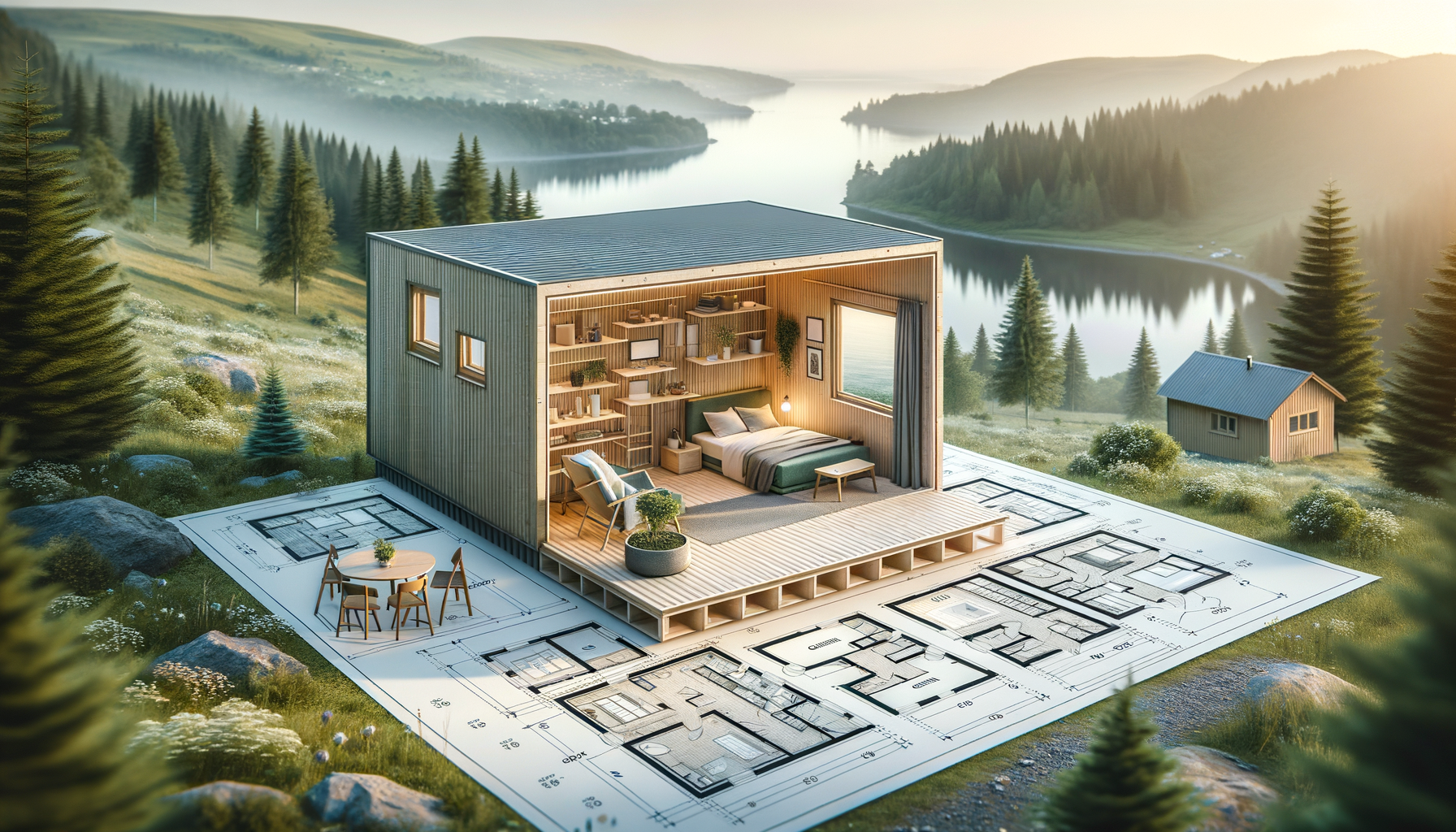
Why More Homeowners Are Turning to Prefabricated Cabins: A Practical Guide to Time-Saving, Customizable Living Spaces
The Benefits of Prefabricated Cabins
Prefabricated cabins have emerged as a popular choice for those seeking efficient and cost-effective housing solutions. These structures are built off-site in a factory setting, which allows for a high degree of quality control and minimizes construction waste. One of the most significant benefits of prefabricated cabins is the speed of construction. Since the building components are manufactured in a controlled environment, the process is not subject to weather delays, which are a common issue in traditional construction.
Moreover, prefabricated cabins offer considerable cost savings. The factory-based production process reduces labor costs and material waste, making these cabins an attractive option for budget-conscious buyers. The reduced construction time also means that homeowners can move in sooner, saving on temporary housing costs.
Another advantage is the environmental impact. Prefabricated cabins are often designed with sustainability in mind, utilizing energy-efficient materials and construction techniques. This approach not only reduces the carbon footprint but also results in lower utility bills for the occupants.
In summary, prefabricated cabins offer a blend of speed, affordability, and sustainability, making them a compelling choice for modern homeowners looking to maximize value without compromising on quality.
The Convenience of Modular Cabins
Modular cabins take the convenience of prefabricated structures to another level. These cabins are composed of modules that are constructed off-site and then transported to the final location for assembly. This modular approach allows for exceptional flexibility in design, enabling homeowners to choose from a wide range of styles and layouts.
One of the primary conveniences of modular cabins is their adaptability. Homeowners can easily expand or modify their living space by adding or rearranging modules without the need for extensive renovations. This flexibility is ideal for growing families or those who anticipate changing needs over time.
Additionally, modular cabins are typically designed to meet or exceed local building codes, ensuring safety and compliance. The factory-controlled environment also means that each module is built to precise specifications, resulting in a high-quality finished product.
Overall, modular cabins offer a level of convenience that is hard to match. Their adaptability, compliance with building standards, and high-quality construction make them a smart choice for those seeking a versatile and hassle-free living solution.
Customizable Prefab Cabins: Tailoring Your Space
One of the most appealing aspects of prefabricated cabins is their customization potential. Unlike traditional homes, which often come with fixed layouts and features, prefab cabins offer a high degree of personalization. Homeowners can select from various design options, finishes, and features to create a space that truly reflects their style and needs.
Customization options can include:
- Choice of materials for interior and exterior finishes
- Flexible floor plans to accommodate specific lifestyle requirements
- Integration of energy-efficient technologies and smart home features
These options allow homeowners to create a unique living space that aligns with their personal preferences and functional needs. Furthermore, the ability to customize extends to the exterior of the cabin, where choices in siding, roofing, and landscaping can enhance the overall aesthetic appeal.
In conclusion, customizable prefab cabins provide an opportunity to design a home that is as unique as its owner. The ability to tailor every aspect of the cabin ensures that it not only meets practical needs but also serves as a personal sanctuary.
Comparing Prefabricated and Traditional Cabins
When considering a new cabin, it’s essential to weigh the differences between prefabricated and traditional construction methods. Prefabricated cabins offer several advantages over traditional builds, particularly in terms of time and cost efficiency. The factory-based production of prefab cabins means that construction can proceed without weather-related delays, resulting in a faster build time.
In contrast, traditional cabins are built on-site, which can lead to extended construction periods due to weather and logistical challenges. This can also increase costs, as prolonged projects often require more labor and resources.
Another key difference lies in the level of customization and precision. Prefabricated cabins are manufactured with exact specifications, ensuring a high level of quality and consistency. Traditional cabins, while offering a handcrafted appeal, may not achieve the same level of precision without significant investment in skilled labor.
Ultimately, the choice between prefabricated and traditional cabins depends on individual priorities. Those seeking a quick, cost-effective, and customizable solution may find prefabricated cabins to be the ideal choice, while those who value traditional craftsmanship and are willing to invest the time and resources may prefer conventional construction.
Conclusion: Embracing the Future of Cabin Living
As more homeowners seek efficient, customizable, and environmentally friendly housing options, prefabricated cabins have emerged as a viable solution. Their benefits in terms of speed, cost, convenience, and customization make them an attractive choice for a wide range of buyers.
Whether you’re looking for a permanent residence, a vacation retreat, or an additional workspace, prefabricated cabins offer a modern approach to living that aligns with contemporary needs and values. By embracing this innovative building method, homeowners can enjoy a tailored living experience that meets their unique requirements while also contributing to a more sustainable future.